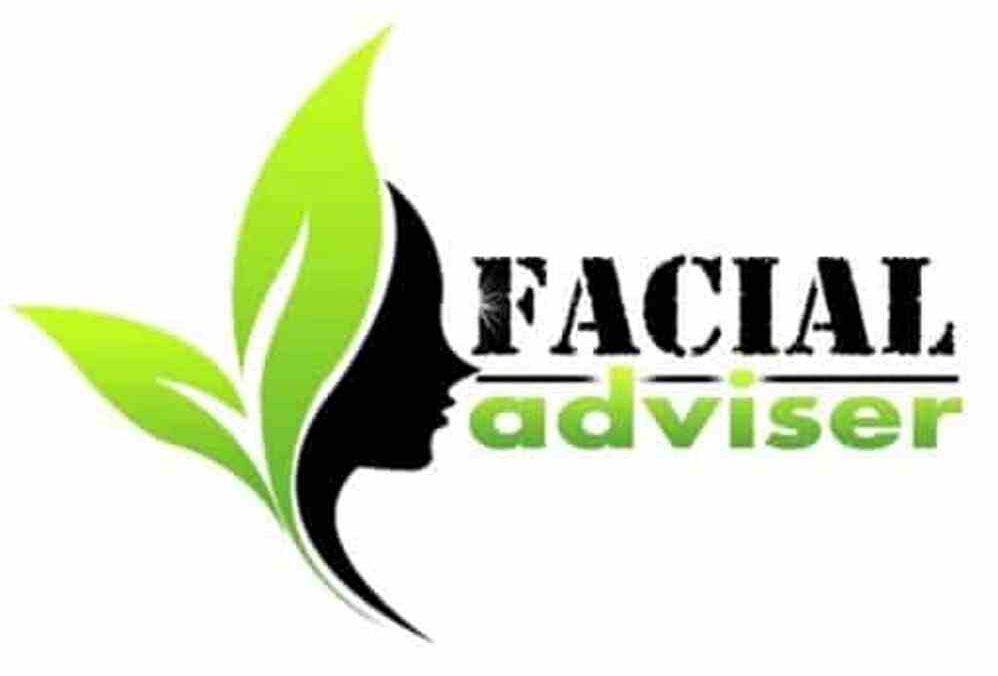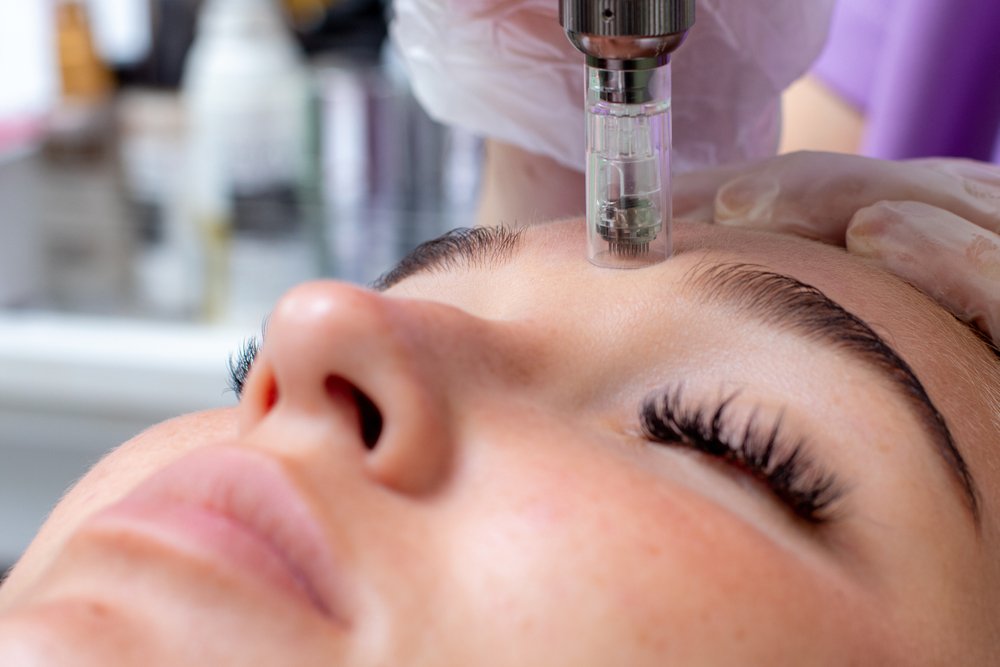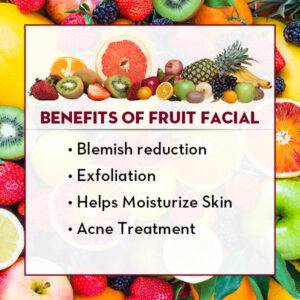This Site Is A Participant In The Amazon Services LLC Associates Program. We may earn money or products from Amazon or the companies mentioned in this post.
The best facial treatment for aging skin is a combination of retinol and hyaluronic acid. Retinol stimulates collagen production, while hyaluronic acid hydrates and plumps the skin, reducing the appearance of fine lines and wrinkles.
This powerful combination helps to improve skin texture and firmness, giving you a more youthful and radiant complexion. In addition, regular use of sunscreen is essential to protect the skin from further damage caused by sun exposure. By incorporating these ingredients into your skincare routine, you can effectively address the signs of aging and maintain a healthy, youthful glow.
Note: please be informed that ai writing detection tools might still detect ai in the content as their detection methods keep evolving.

Credit: nypost.com
Introduction: Understanding Aging Skin And The Need For Facial Treatments
Brief Explanation Of The Natural Aging Process Of The Skin
As we age, our skin undergoes various changes that result in visible signs of aging. These changes occur due to a combination of intrinsic factors (natural aging process) and extrinsic factors (environmental factors and lifestyle choices). Here are some key points to understand the natural aging process of the skin:
- The production of collagen and elastin, which provide structural support to the skin, slows down, leading to a loss of elasticity and firmness.
- The natural renewal process of skin cells also slows down, causing a buildup of dead skin cells and a dull complexion.
- The production of natural oils decreases, resulting in drier skin.
- The skin’s ability to retain moisture diminishes, leading to dehydration and the formation of fine lines and wrinkles.
- The impacts of external factors such as sun exposure, pollution, and smoking can accelerate the aging process and cause further damage to the skin.
Importance Of Treating Aging Skin To Maintain A Youthful Appearance
Taking care of aging skin is essential to maintain a youthful appearance and promote overall skin health. Here are a few reasons why treating aging skin is important:
- Boosts collagen production: Facial treatments targeting aging skin can stimulate collagen production, promoting skin elasticity, reducing wrinkles, and improving firmness.
- Hydrates the skin: Aging skin tends to be drier, and facial treatments that focus on hydration can replenish moisture levels, leaving the skin plump and supple.
- Improves skin tone and texture: Age spots, uneven skin tone, and rough texture are common signs of aging skin. Treatments such as chemical peels and microdermabrasion can help improve these issues.
- Enhances overall skin health: Treating aging skin helps improve the overall health of the skin by reducing inflammation, boosting cell turnover, and improving blood circulation.
- Prevents further damage: By providing nourishment, protection, and targeted care, facial treatments can help prevent further damage from uv rays, environmental pollutants, and other external factors.
What Is The Best Facial Treatment For Aging Skin?
When it comes to finding the best facial treatment for aging skin, there is no one-size-fits-all solution. The most effective treatment for you will depend on your specific skin concerns, preferences, and budget. It’s best to consult with a skincare professional or dermatologist who can assess your skin and recommend the most suitable treatment options.
Some popular facial treatments for aging skin include:
- Chemical peels: These treatments involve the application of a chemical solution to exfoliate the outermost layer of the skin, revealing fresher, younger-looking skin underneath.
- Microdermabrasion: This treatment uses tiny crystals or a diamond tip to gently exfoliate the skin and stimulate collagen production, resulting in softer, smoother skin.
- Laser therapy: Laser treatments can target specific skin concerns such as fine lines, wrinkles, and age spots, promoting collagen production and skin rejuvenation.
- Dermal fillers: These injections can plump up sagging skin and fill in deep lines and wrinkles, giving a more youthful appearance.
- Microneedling: This treatment involves using tiny needles to create micro-injuries on the skin’s surface, stimulating collagen production and improving skin texture.
- Anti-aging facials: These customized facials often include a combination of exfoliation, hydration, and nourishing ingredients to target specific signs of aging.
Remember, it’s crucial to discuss your goals and concerns with a skincare professional before deciding on any treatment. They will guide you towards the best facial treatment for your aging skin.
Factors Contributing To Aging Skin
Aging is a natural process that affects everyone as they grow older. However, there are certain factors that can contribute to the premature aging of the skin. Understanding these factors can help us make informed decisions about our skincare routine and lifestyle choices.
In this section, we will explore the environmental, genetic, and lifestyle factors that play a role in aging skin.
Environmental Factors That Contribute To Premature Aging Of The Skin:
- Sun exposure: Prolonged and unprotected exposure to the sun’s harmful uv rays can cause significant damage to the skin, leading to premature aging. This includes the formation of wrinkles, fine lines, age spots, and uneven skin tone.
- Pollution: Environmental pollutants, such as smoke, smog, and dust particles, can accelerate the aging process by causing oxidative stress and inflammation in the skin. This can result in dullness, dryness, and the breakdown of collagen and elastin fibers.
- Harsh weather conditions: Extreme temperatures, high humidity, and cold winds can strip the skin of its natural moisture and protective barrier. This can lead to dryness, flakiness, and a weakened skin structure, making it more prone to signs of aging.
Genetic Factors That Affect The Aging Process:
- Collagen and elastin production: The genes we inherit from our parents can determine how quickly our skin loses collagen and elastin, two essential proteins responsible for youthful and supple skin. Some individuals may have slower collagen turnover, leading to a more gradual aging process.
- Skin thickness: Genetics also play a role in determining the thickness of our skin. Thinner skin is more susceptible to fine lines, wrinkles, and sagging, making the signs of aging more noticeable at an earlier age.
- Natural antioxidants: Certain genetic variations may affect the efficiency of our body’s natural antioxidant defense system. Antioxidants help combat free radicals, which can damage skin cells and contribute to aging. Having an optimal antioxidant defense system can slow down the aging process.
Lifestyle Choices That Can Accelerate Skin Aging:
- Smoking: Smoking cigarettes releases harmful toxins and chemicals into the body, causing oxidative stress and inflammation. These factors can accelerate the breakdown of collagen and elastin, leading to premature aging, wrinkles, and a dull complexion.
- Unhealthy diet: Poor nutrition can directly impact the health and appearance of our skin. Consuming a diet high in processed foods, sugar, and unhealthy fats can increase inflammation, promote glycation (a process where sugar molecules bind to collagen fibers), and contribute to the formation of wrinkles.
- Lack of sleep: Chronic sleep deprivation can disrupt the body’s natural repair and renewal processes, including collagen production. Inadequate sleep can result in dull and lackluster skin, fine lines, and dark under-eye circles.
- Stress: Chronic stress triggers the release of stress hormones, such as cortisol, which can affect the health and vitality of our skin. Increased cortisol levels can lead to collagen breakdown and reduced skin elasticity, ultimately accelerating the aging process.
By taking into account these environmental, genetic, and lifestyle factors, we can make informed decisions to protect and care for our skin as we age.
Common Signs Of Aging Skin
As we age, our skin undergoes natural changes that can contribute to a less youthful appearance. Understanding the common signs of aging skin is essential in choosing the best facial treatment to address these concerns effectively. Here are some key points to consider:
- Fine lines and wrinkles: One of the most noticeable signs of aging skin is the development of fine lines and wrinkles. These can appear on the forehead, around the eyes (crow’s feet), and around the mouth. Fine lines are shallow and may only be visible up close, while wrinkles are deeper creases that become more prominent with age.
- Loss of elasticity and firmness: Aging skin tends to lose its natural elasticity and firmness over time. As a result, the skin may appear saggy or loose, especially around the cheeks, jawline, and neck. This loss of elasticity is often caused by a decrease in collagen production, which is responsible for keeping the skin supple and taut.
- Uneven skin tone and texture: Aging skin can develop an uneven tone and texture, making it look dull and lackluster. This can be attributed to factors such as sun exposure, hormonal changes, and the gradual deceleration of the skin’s natural exfoliation process. Uneven skin tone may manifest as hyperpigmentation (dark spots or age spots), while texture issues can include roughness, dry patches, or enlarged pores.
- Age spots and hyperpigmentation: Age spots, also known as solar lentigines or liver spots, are small, discolored patches that often appear on sun-exposed areas of the skin. These spots are the result of an overproduction of melanin, the pigment responsible for giving color to our skin. Hyperpigmentation can also occur in the form of melasma, which usually presents as larger patches of darkened skin and is commonly associated with hormonal changes or sun exposure.
Understanding these common signs of aging skin is crucial in selecting the most suitable facial treatment for rejuvenation. Whether targeting fine lines and wrinkles, loss of elasticity and firmness, uneven skin tone and texture, or age spots and hyperpigmentation, various treatments and skincare products can help minimize the appearance of these signs and promote a more youthful complexion.
Non-Invasive Facial Treatments For Aging Skin
As we age, our skin naturally starts to show the signs of time. Fine lines, wrinkles, and a loss of elasticity become more apparent, leaving many of us looking for effective facial treatments to combat these concerns. Non-invasive options such as chemical peels and microdermabrasion offer a promising solution, providing visible improvements without the need for surgical procedures.
In this section, we will explore the key aspects of these non-invasive treatments and their benefits for improving the texture and tone of aging skin.
Overview Of Non-Invasive Options Such As Chemical Peels And Microdermabrasion
- Chemical peels: This treatment involves applying a chemical solution to the skin, which exfoliates the outermost layer, revealing new skin underneath. The chemical peel can be tailored to suit different skin types and concerns, ranging from mild to deep peels. It stimulates collagen production, reduces fine lines and wrinkles, and improves overall skin texture.
- Microdermabrasion: This procedure uses a handheld device that gently exfoliates the skin, removing the outer layer of dead skin cells. It can address various concerns, including fine lines, uneven skin tone, and sun damage. Microdermabrasion promotes cell turnover, revealing smoother, brighter skin and stimulating collagen production.
Benefits Of Non-Invasive Treatments For Improving Skin Texture And Tone
- Improved skin texture: Non-invasive facial treatments can help to smooth rough or uneven skin texture. They remove dead skin cells, stimulate collagen production, and encourage the growth of new skin cells, resulting in a smoother and more refined complexion.
- Enhanced skin tone: Uneven skin tone, sunspots, and hyperpigmentation can be effectively addressed with non-invasive treatments. Chemical peels and microdermabrasion promote skin cell turnover, reducing pigmentation issues and revealing a more even and radiant skin tone.
- Reduction of fine lines and wrinkles: One of the main concerns with aging skin is the development of fine lines and wrinkles. Non-invasive facial treatments work by stimulating collagen production, which helps to plump and firm the skin, reducing the appearance of lines and wrinkles.
- Minimized appearance of pores: Enlarged pores can make the skin look dull and congested. Non-invasive options such as chemical peels and microdermabrasion help to deep-cleanse the pores, minimizing their appearance and improving overall skin clarity.
- Non-surgical and minimal downtime: Unlike surgical procedures, non-invasive treatments do not require anesthesia or extensive recovery time. They are generally well-tolerated, with minimal discomfort and downtime, making them a convenient option for those with busy lifestyles.
Non-invasive facial treatments such as chemical peels and microdermabrasion offer a range of benefits for aging skin. From improved skin texture and tone to the reduction of fine lines and wrinkles, these treatments provide visible results without the need for invasive procedures.
Whether you’re looking to rejuvenate your skin or address specific concerns, non-invasive options can be an excellent choice to achieve a more youthful and radiant complexion.
Invasive Facial Treatments For Aging Skin
While there are many non-invasive options available for combatting the signs of aging, some individuals may require more intensive treatments to achieve their desired results. Invasive facial treatments, such as facelifts and laser resurfacing, are popular choices for addressing severe signs of aging.
In this section, we will delve into the explanation of these treatments, their effectiveness, as well as a comparison of cost, downtime, and risks associated with each.
Explanation Of Invasive Treatments Like Facelifts And Laser Resurfacing:
- Facelifts are surgical procedures that target sagging skin and deep wrinkles, providing comprehensive rejuvenation to the face and neck area. This procedure involves lifting and tightening the underlying tissues while removing excess skin to create a more youthful appearance.
- Laser resurfacing, on the other hand, is a non-surgical invasive treatment that uses laser technology to remove damaged outer layers of skin. By stimulating collagen production, it helps to reduce fine lines, wrinkles, and uneven skin texture.
Discuss The Effectiveness Of Invasive Treatments For Addressing More Severe Signs Of Aging:
- Facelifts are highly effective in addressing moderate to severe signs of aging, including sagging skin, deep creases, and jowls. This surgical procedure can provide long-lasting results, often enhancing the overall facial contour.
- Laser resurfacing is effective in improving skin tone, texture, and reducing the appearance of fine lines and wrinkles. This procedure can also help in treating acne scars and pigmentation issues.
Comparison Of Cost, Downtime, And Risks Associated With Invasive Treatments:
- Cost: Facelifts are generally more expensive than laser resurfacing due to the complexity of the surgical procedure. The cost can vary depending on the extent of the treatment and the surgeon’s experience.
- Downtime: Facelifts typically require more downtime compared to laser resurfacing. Patients may need a few weeks to recover fully, with swelling and bruising being common during the initial phase. Laser resurfacing often involves less downtime, with most individuals able to resume their regular activities within a week.
- Risks: Both facelifts and laser resurfacing carry certain risks. Facelifts involve surgery, which entails risks such as infection, scarring, and anesthesia-related complications. Laser resurfacing carries a risk of temporary side effects such as redness, swelling, and sensitivity to sunlight.
Overall, invasive treatments like facelifts and laser resurfacing offer powerful solutions for individuals with more severe signs of aging. However, it is essential to consult with a qualified medical professional to determine the most suitable treatment option based on individual needs, goals, and medical history.
Natural And Diy Facial Treatments For Aging Skin
Introduction To Natural Remedies Like Homemade Masks And Facial Massages
Aging skin requires extra care and attention to maintain its youthful glow. While there are countless facial treatments available in the market, many people are turning to natural remedies for skin rejuvenation. Natural ingredients can be found in your own kitchen and can effectively combat the signs of aging without any harsh chemicals.
From homemade masks to facial massages, these natural remedies offer a gentle yet powerful solution for aging skin.
Benefits Of Using Natural Ingredients For Skin Rejuvenation
Natural ingredients have been used for centuries to nourish and revitalize the skin. When it comes to aging skin, these ingredients offer numerous benefits that promote a youthful appearance. Here are some key advantages of using natural ingredients for skin rejuvenation:
- Gentle and safe: Natural ingredients are typically gentle on the skin and free from harsh chemicals, making them suitable for all skin types, including sensitive skin. They minimize the risk of irritation and adverse reactions.
- Nutrient-rich: Natural ingredients are packed with essential nutrients, vitamins, and antioxidants that nourish the skin from within. These nutrients help in improving elasticity, reducing fine lines, and promoting a radiant complexion.
- Hydration and moisturization: Many natural ingredients have excellent hydrating properties, helping to lock in moisture and prevent dryness. Proper hydration is vital for maintaining a plump and youthful appearance.
- Anti-aging properties: Natural ingredients often contain powerful antioxidants that can help fight off the damage caused by free radicals, which are a major contributor to aging. They also stimulate collagen production, which helps to reduce the appearance of wrinkles and fine lines.
- Cost-effective: Compared to store-bought products and professional treatments, natural remedies are often more affordable and budget-friendly. The ingredients can be easily found in your kitchen or local grocery store.
- Customizable and versatile: Natural remedies like homemade masks and facial massages can be personalized according to your unique skin needs. You can adapt the recipes to target specific concerns, such as uneven skin tone, dullness, or sagging skin.
With these benefits in mind, it’s no wonder that natural remedies are gaining popularity among those seeking effective and safe solutions for aging skin.
Now that we have explored the benefits of using natural ingredients for skin rejuvenation, let’s delve into specific natural remedies that can help address the signs of aging.
Professional Recommendations For Facial Treatments
Aging skin requires special care and attention to maintain its health and youthful appearance. With a plethora of facial treatments available in the market, it can be overwhelming to decide which one is the best for your aging skin. That’s where professional advice comes into play.
By consulting with a dermatologist or aesthetician, you can determine the most suitable treatment plan tailored to your individual needs. Here are the key points to consider:
- Consultation with a dermatologist or aesthetician to determine the best treatment plan:
- Professional advice: Seek guidance from experts who specialize in skin care to assess and address your skin concerns.
- Comprehensive evaluation: A consultation allows the professional to understand your specific needs, evaluate your skin condition, and recommend the most effective treatments.
- Customized approach: Based on their expertise, dermatologists or aestheticians can develop a personalized treatment plan that targets your unique concerns, such as wrinkles, fine lines, sagging skin, or uneven tone.
- Importance of customized treatments for individual skin concerns and goals:
- Tailored solutions: Age-related skin concerns differ from person to person, and a one-size-fits-all approach may not yield the desired results. Customized treatments take into account your specific concerns, skin type, and goals.
- Addressing multiple signs of aging: Aging skin often exhibits multiple signs such as wrinkles, dryness, loss of elasticity, and uneven tone. Customized treatments can address these concerns comprehensively.
- Treatment options: A professional consultation can introduce you to various treatment options, including facial peels, microdermabrasion, laser therapies, dermal fillers, or skin-tightening procedures. The expert can recommend the most suitable options based on your skin’s needs.
To achieve the best facial treatment for aging skin, consulting with a dermatologist or aesthetician is vital. Their professional recommendations will guide you towards customized treatments that cater to your specific skin concerns and goals. Remember, when it comes to aging skin, seeking professional advice is the key to achieving optimal results.
So take that step today and begin your journey towards healthy and vibrant skin.
Frequently Asked Questions For What Is The Best Facial Treatment For Aging Skin?
What Are The Common Signs Of Aging Skin?
Common signs of aging skin include wrinkles, fine lines, sagging skin, age spots, and uneven skin tone.
What Causes Skin To Age?
Skin aging is caused by a combination of factors, including natural aging process, sun damage, loss of collagen and elastin, lifestyle choices, and genetic factors.
How Can Facial Treatments Help With Aging Skin?
Facial treatments can help to improve the appearance of aging skin by stimulating collagen production, reducing fine lines and wrinkles, improving skin texture, and promoting a more youthful glow.
What Are Some Popular Facial Treatments For Aging Skin?
Some popular facial treatments for aging skin include chemical peels, microneedling, laser resurfacing, dermal fillers, and radiofrequency skin tightening.
How Often Should I Have A Facial Treatment For Aging Skin?
The frequency of facial treatments for aging skin varies depending on the type of treatment and individual needs. It is recommended to consult with a skincare professional to determine the ideal treatment frequency for you.
Conclusion
To sum up, finding the best facial treatment for aging skin involves considering individual needs and preferences. Whether you opt for non-invasive treatments like microdermabrasion or laser therapy, or prefer indulging in luxurious facial masks and creams, the key is to protect and nourish your skin.
Consistency is vital, so make sure to establish a skincare routine tailored to your skin type and concerns. Remember to prioritize sunscreen and hydration, as they are essential for maintaining skin health and preventing further damage. Consulting with a dermatologist or skincare professional can also provide valuable insights and recommendations.
With the right combination of treatments, products, and lifestyle choices, you can effectively combat the effects of aging and enjoy a radiant, youthful complexion. Take the time to prioritize self-care and embrace the journey towards healthy, glowing skin.

Amelia Varley is a professional beauty blogger and freelance writer with a passion for all things skincare, makeup, and holistic wellness. With years of experience in the beauty industry, Amelia shares expert tips, product reviews, and innovative beauty routines with her readers. Her writing is driven by a desire to empower people to look and feel their best through mindful beauty practices. When she’s not writing, Amelia enjoys experimenting with the latest beauty trends and exploring the connection between self-care and confidence.





